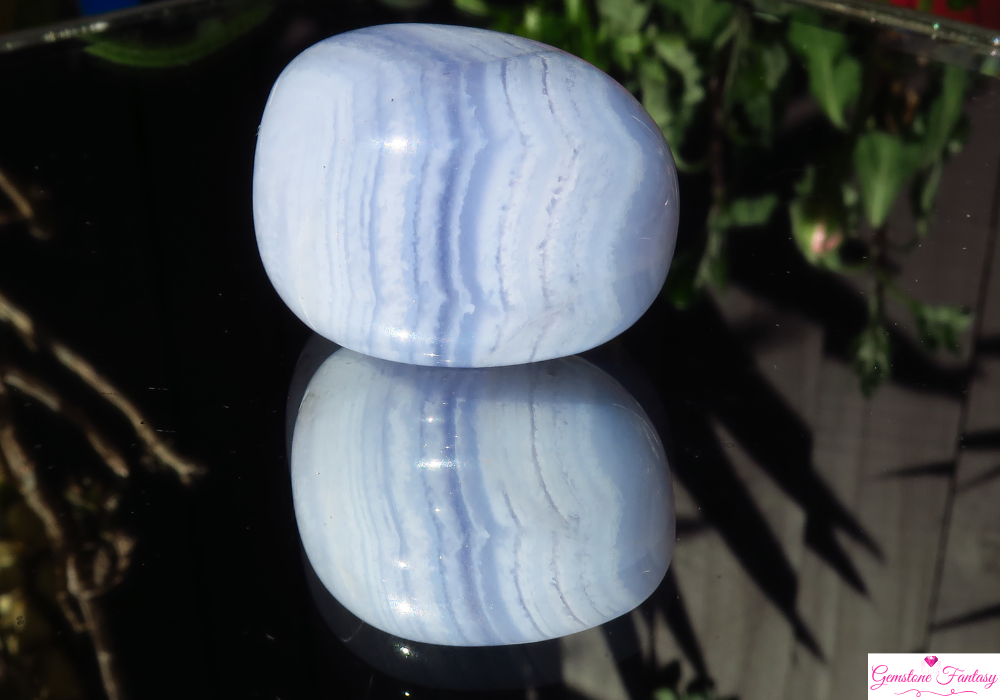Chrysocolla is a strikingly beautiful gemstone known for its vibrant shades of blue and green, often reminiscent of the earth’s oceans and landscapes. This copper-based mineral is prized for its vivid coloration and is associated with calm, communication, and emotional balance. Though it is softer than many other gemstones, its rich history and metaphysical associations make it a popular choice for collectors, healers, and jewelry lovers alike. Chrysocolla is often used in cabochon jewelry or as decorative stones and is particularly cherished in spiritual and healing circles.
Geological Formation
Chrysocolla is a secondary copper mineral, meaning it forms from the oxidation of copper deposits, often in association with other copper minerals such as malachite, turquoise, and azurite. It is commonly found in the oxidized zones of copper mines and is typically found as a mass or crust rather than individual crystals.
Chrysocolla deposits are found in various parts of the world, including the USA (Arizona and New Mexico), Chile, Peru, Israel, and the Democratic Republic of Congo. The copper content is responsible for its distinctive blue and green colors, though the exact hue and appearance can vary depending on the other minerals present.
Varieties and Classifications
Chrysocolla often displays a range of blue and green tones, from light, turquoise-like shades to deeper, more intense hues. It may also contain streaks or patches of black, brown, or tan, particularly when mixed with other minerals such as malachite, azurite, or quartz. Chrysocolla is generally classified by its color and texture:
- Pure Chrysocolla: Vibrant blue-green coloration, typically found in softer masses.
- Chrysocolla in Quartz: A mixture of chrysocolla with quartz, which adds hardness and durability. This variety is often more suitable for jewelry.
- Chrysocolla with Malachite: The blending of chrysocolla’s blues with malachite’s greens creates striking, banded patterns.
- Chrysocolla with Azurite: This variety displays a mix of chrysocolla’s blue-green and azurite’s deep blue, often resulting in a visually stunning combination.
Cultural Significance and Folklore
Chrysocolla has been revered throughout history for its calming and communicative properties. In ancient Egypt, it was known as a stone of wisdom, often associated with peace and protection. Queen Cleopatra was said to have worn chrysocolla as part of her adornments, believing in its ability to calm tempers and promote diplomatic success.
In Native American cultures, chrysocolla was used in rituals and ceremonies for strengthening emotional bonds and healing relationships. The stone is considered a powerful tool for self-expression, helping individuals communicate their thoughts and emotions clearly.
Birthstone and Zodiac Connections
Chrysocolla is not traditionally recognized as a birthstone, but it is often associated with the zodiac signs of Taurus (April 20 – May 20) and Gemini (May 21 – June 20).
For Taurus, chrysocolla’s calming energy can help soothe the emotional intensity of this sign and bring balance to their steadfast, sometimes stubborn nature. For Gemini, chrysocolla enhances communication and self-expression, complementing their natural curiosity and quick-thinking.
Healing and Metaphysical Properties
Chrysocolla is widely appreciated for its metaphysical properties, particularly its soothing and communicative energy. It is often referred to as the “Stone of Communication” due to its believed ability to aid in clear, honest self-expression. Some of its key metaphysical properties include:
- Emotional Balance: Chrysocolla is said to promote emotional healing, calming turbulent feelings and helping individuals release negative emotions such as guilt, fear, and anger. It is often used to bring peace and serenity during stressful times.
- Communication: As a stone linked with the throat chakra, chrysocolla is thought to improve communication skills, helping people express themselves more clearly and confidently. It is a popular stone for public speakers, writers, and teachers.
- Healing: Chrysocolla is believed to support physical healing, particularly in areas of the throat, lungs, and heart. Many crystal healers use it to alleviate issues related to stress, anxiety, and depression.
- Creativity: Its soothing energy is also said to inspire creativity, making it a great stone for artists, musicians, and anyone engaged in creative endeavors.
Popular Uses in Jewelry and Design
Chrysocolla’s vivid colors and unique patterns make it a popular choice for jewelry, though its relative softness (2.5 to 3.5 on the Mohs scale) means it is more commonly used in pieces that are not subjected to heavy wear, such as pendants, earrings, and brooches.
- Pendants and Necklaces: Chrysocolla’s striking blue-green color makes it an eye-catching choice for necklaces and pendants. It is often set in silver, which complements its cool tones.
- Cabochons: Given its softness, chrysocolla is frequently cut into cabochons rather than faceted stones. Cabochons show off its unique patterns and colors beautifully.
- Bracelets: When combined with harder minerals like quartz or malachite, chrysocolla can be used in bracelets and cuffs, creating bold, statement pieces.
Chrysocolla is also popular in metaphysical jewelry, where it is worn for its purported calming and communicative properties.
How to Identify Authentic Chrysocolla
Identifying authentic chrysocolla involves examining its color, texture, and associated minerals. Here are some key things to look for:
- Color: Authentic chrysocolla typically features vivid blues and greens. While it may show variations due to its mineral composition, its colors are usually distinct and vibrant.
- Hardness: Chrysocolla is a soft stone, so it can easily scratch or chip. If the stone is particularly hard, it may be a composite material or mixed with quartz or other minerals.
- Inclusions: Chrysocolla often includes black or brown inclusions, as well as patterns caused by its association with minerals like malachite and azurite.
Tips for Caring and Storing
Due to its softness, chrysocolla requires gentle care to maintain its beauty:
- Cleaning: Clean chrysocolla jewelry with warm, soapy water and a soft cloth. Avoid harsh chemicals, ultrasonic cleaners, and steam cleaning, as these can damage the stone.
- Storage: Store chrysocolla jewelry separately from harder gemstones to prevent scratching. Use a soft pouch or a fabric-lined jewelry box to keep it safe.
- Handling: Since chrysocolla is relatively fragile, it’s best to avoid wearing it during activities that could expose it to bumps or knocks.
Market Trends and Pricing
Chrysocolla is an affordable gemstone compared to other blue and green stones like turquoise or aquamarine. However, its price can vary depending on the quality, color, and size of the stone. Chrysocolla mixed with quartz or other minerals tends to fetch higher prices due to its improved durability.
In the jewelry market, chrysocolla is often used in bohemian and artisan-style designs, where its natural beauty and earthy tones are emphasized. It remains popular among collectors and those who appreciate gemstones with spiritual and emotional significance.
Final Thoughts
Chrysocolla is a gemstone that offers both visual and emotional appeal. Its vibrant colors and calming energy make it a favorite among jewelry designers, crystal healers, and collectors. Whether you’re drawn to its soothing properties or its striking beauty, chrysocolla is a stone that brings a sense of peace and harmony to those who wear or work with it. With proper care, chrysocolla can be enjoyed for its beauty and metaphysical benefits for years to come.

















